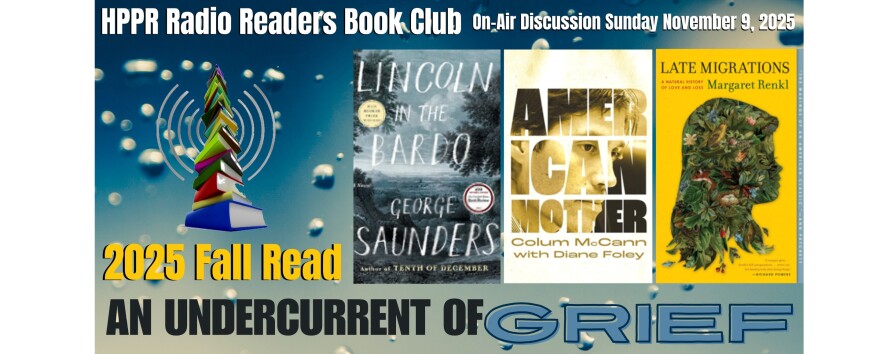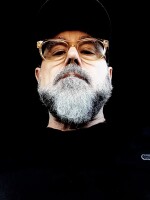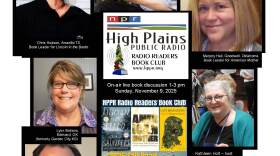This book may contain language, sexual content, and themes of grief and loss, which may be challenging for some readers. Reader caution advised.
Meet the Occupants of Saunders’ Bardo
by Chris Hudson
Hi, my name is Chris Hudson and I’m an English professor at Amarillo College. I’d like to welcome you to the Fall Radio Readers Book Club. I’m here to talk to you again about George Saunders’ Lincoln in the Bardo.
All three of this Fall’s reads can be discussed in terms of geography, especially if we think of it as a metaphor, which all of our authors do. But they also use it literally—my notes for Margaret Renkl’s Late Migrations for instance, are organized by place. And Colum McCann and Diane Foley’s American Mother, despite its title, is global in reach. And Lincoln in the Bardo is mainly situated in that “in between” space.
I think of the characters in the bardo as sites, and this is where the metaphor comes in--they are sites where stories are told. All the characters are in the bardo because they won’t let go of their stories, which is also to say they won’t let go of their selves. I’m no expert on Buddhism but one of its goals as I understand it is to lose one's self. Our characters tenaciously hold on to stories instead, and we learn they have told them thousands of times, so many times that other characters can fill in words for them when their memory falters.
Hans Vollman is the first voice in the story and one of the main four characters. Hans was unexpectedly dispatched to the bardo when a beam crashed down on his head in his print shop. Sadly, this was just before he was to consummate his marriage. His form in the bardo (and I’ll let you use your imagination here) is distorted in a way one might picture a man engorged with desire.
The second voice is that of Roger Bevins III, who took his own life because his lover left him and because of the complications of being homosexual in his era. He regrets his decision, even as he loses consciousness, and realizes he wants to remain in the world. He manifests as a form with hundreds of eyes, hands, noses, etc. representing his desire to experience the sensual beauty of the world.
The other important resident of the bardo is the Reverend Everly Thomas—he is unusual because he is the only spirit in the bardo who knows he is dead. I will leave my thoughts about the good Reverend in my concluding byte when I discuss the existence of a chapter Saunders omitted from the novel.
The fourth main character arrives in the first few pages—Willie Lincoln. Hans Vollman tells him early on that children are not meant to tarry there. But Willie, too, is tethered to his previous world by his father’s grief-stricken promise to return.
The geography of the bardo, sadly, also reflects the society and time in which the novel is set. An iron fence separates the tombs, graves, and marble monuments of the whites, from the mass grave of Blacks and poor whites. We learn the story of many of these residents from a foul-mouthed married couple to a mute mixed-race girl who was sexually abused throughout her life.
There are other beings in the bardo as well. For example, demonic tendrils can capture and hold spirits in an eternal embrace of torment. And then there is the matterlightblooming (all one word) phenomenon. Its appearance is the sign a resident has moved on. It is also something the characters in the bardo dread because they believe it will forever prevent them from returning to their previous lives.
These spirits, phenomena, and historical figures populate Saunders’ in-betweeen world. Their exchanges are often rapid and unfinished, which makes the longer stories they tell and the stories we piece together more acute and heart-rending.
For HPPR’s Radio Readers Book Club, I’m Chris Hudson. Thanks for listening!










